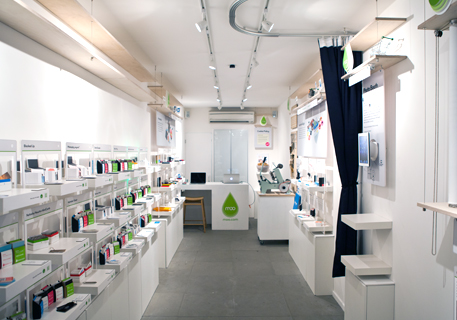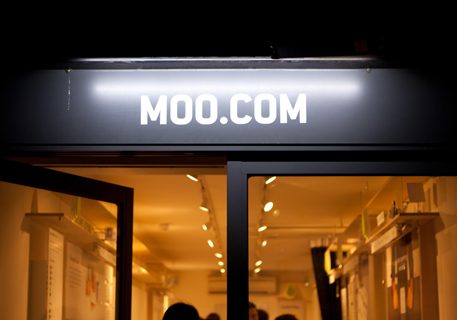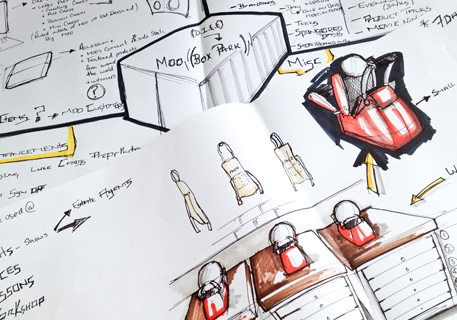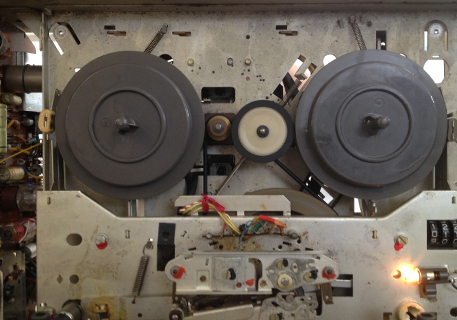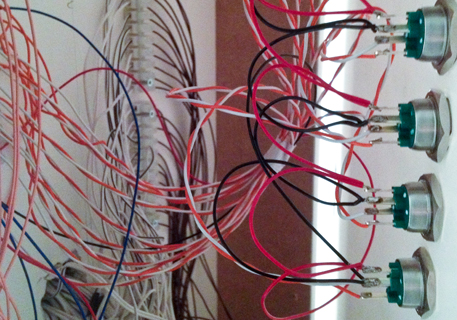Building the MOO Shop
« Browse all tipsWhen the MOO Creative team was tasked with building a beautiful retail space in just under a month, nobody was surprised when they pulled it off with style, on time and their usual commitment to great design.
But it’s no easy feat going from ideas on a whiteboard to a fully functioning shop in such a short space of time. So here, in their own words, are the steps they took to making it happen.
Know your concept
Simo Ferraro, UI designer
Whatever project you’re trying to conceive, it all starts with an initial brainstorming meeting, a clean whiteboard, a working marker pen, and a fresh pot of coffee.
After that, it’s simply a case of throwing as many ideas as you can at the wall, until one comes up that sparks everyone’s imagination. It’s best to choose it fast, because the more time you spend deciding, the less time you’ll have to pull the whole thing off.
The shop concept of “bring our website to life, in the real world”, was the answer to a very simple question I asked myself after the creative team was briefed: “What is the medium through which our users know us and interact with us, and what could be the medium through which new potential users and customers of the shop will interact with us in the future?” The answer was simple: our website.
Once we’d decided "what" it was just a matter of "how” – but that’s a different article!Know your team
Paul Thorogood, Head of Product Design
With any project it is always good to know your team, but it is even more important when the project is a large one – like, say, building a shop! With that, you have tight budgets, even tighter deadlines, and its important to work with people you know can get done what needs to get done.
-
- Support your people - when they are working incredibly hard, they can still produce good work, stay motivated and have a good experience if they know you have their back.
- Delegate – know each person’s strength and delegate as much as possible - and crucially, as soon as possible - to the right person.
- Individualise - come up with smaller plans for each person to help them focus and show exactly what they are contributing to the bigger picture.
When you’re doing a project you’ve never done before, making your team feel appreciated will, quite simply, gain their trust and produce better results – especially when navigating new waters.
Know your Limitations
Jovanna Mendes de Souza, Graphic Designer
When you’re working towards a very tight deadline, its vital to recognize early on which things you simply don’t have the expertise or the time to do yourself. Remind yourself that:
-
- It is not a failure to bring freelancers with experience in the areas you need – it’s the smart thing to do
- Freelancers provide a fresh perspective and new energy.
- You should use people you trust, but don’t be scared to take a leap of faith on someone new.
- No matter how good they are, if someone isn’t meshing with the team, just stop working with them – they’ll disrupt your progress.
- Be realistic about your time frame and what is possible – so when you’re looking at artwork, include turnaround times.
- You should note down whom you’ve hired and what they’re good at in your contacts book – for next time!
With a creative team, it’s easy to get overly ambitious, with big concepts and complicated crazy solutions. Ask yourself, is it actually possible to get it done in time?
Know when to get on with it
Felix Ackermann, Graphic Designer
So you’ve got your concept, got your team together, assessed strengths and weaknesses, hired freelancers, planned the timings and created the deadlines – now there is only one thing left to do: Get on with it!
You need to know when to put a pin in all the unnecessary meetings and discussions that inevitably happen during the initial creative process, and just start making your ideas come alive.
Remember that not everything will go as planned, but don't get hung up on things that don't work and don't wait for other people to fix it for you. One of the most important things is to keep making decisions – if you stop, or panic, the knock on effect will delay the entire project and you won't be able to catch up in the end.Know what not to do
Rob Wilson, Photographer
This part is difficult – how can you know what not to do on a project, before you’ve tried and failed? Well, the truth is, you can’t – so all we can tell you is what we’ve learned from ours!
-
- Mistakes can be expensive, so with design and copy, make sure you proof everything as much as you possibly can to avoid incurring unnecessary kick-yourself costs.
- Make sure you have everything you need to get the job done before you start – there’s nothing worse than being in the middle of a job and realizing that the thing you need to finish it hasn’t been ordered and will take a week to arrive
- Communication is absolutely vital – if there are issues within the team, clearly communicate to each other what they are to make sure everyone is on the same page, and any problems get ironed out before they snowball.
- Finally, as far as mistakes go, don’t be too scared of them – they’ll happen no matter how well planned your project is. The best way to learn is to mess up – so if things do go wrong, make sure you talk about it afterwards and see what you’ve gained.
Want to visit the MOO Shop?
New to MOO?
MOO makes life a little less virtual. We help our customers print things like business cards, postcards, flyers and stickers, making it easy for them to share information about themselves or their business in the real world.
Print is simple and wonderful. We love it.
View Our Products





